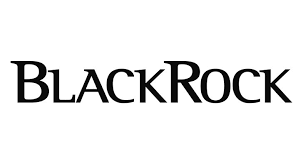贝莱德集团 (BLK.US) 2025年第三度业绩电话会
文章语言:
简
繁
EN
Share
Minutes
原文
会议摘要
BlackRock reported strong organic growth, significant net inflows, and successful acquisitions, emphasizing diversification across asset classes and leveraging technology. The company highlights its strategic focus on private markets, digital assets, and innovation in areas like active ETFs and tokenized investment products. BlackRock aims to provide comprehensive solutions, embracing the convergence of public and private markets, and is optimistic about future opportunities, driven by its differentiated platform and Aladdin technology.
会议速览
BlackRock reported a 25% year-over-year revenue increase to $6.5 billion in Q3 2025, driven by acquisitions, organic base fee growth, and market movements. The company experienced record net new assets of $640 billion and $1.5 billion in net inflows, showcasing broad-based client demand for iShares, private markets, and cash strategies. Strategic acquisitions, including HPS and Elm Tree, and an $80 billion SMA solution, expanded capabilities in private markets, digital assets, and technology. The effective fee rate rose due to higher alternative credit assets, and Technology Services revenue grew by 28%, reflecting sustained demand for technology offerings.
BlackRock reported a 26% increase in expenses YoY, driven by higher compensation and technology investments. Despite this, the company saw record net inflows of $205 billion, led by iShares ETFs, and plans to repurchase at least $375 million in shares by year-end. The adjusted operating margin was 44.6%, down from 46.8% YoY, reflecting the impact of higher performance fees. The firm's capital management strategy prioritizes business investment and shareholder returns.
BlackRock's cash management platform achieves $1 trillion in AUM with $34 billion net inflows, highlighting growth in Bunny Market funds, liquidity products, and money market ETFs. Partnership with Circle boosts cash reserves management, contributing to 64 billion mandate and strong organic fee growth. Client engagement deepens, setting a positive tone for future market-leading organic growth, operating leverage, and earnings.
BlackRock's Q3 results highlight strong global client relationships, diversified organic base fee growth, and enhanced trust through local market expertise, achieving 8% growth over the past year and managing significant net inflows, solidifying its position as a leading investment firm.
BlackRock has successfully integrated active and index strategies, creating a comprehensive platform for clients seeking solutions across public and private markets. The firm's acquisition philosophy, centered on full integration, has strengthened its capabilities and positioned it as a preferred capital partner. With significant progress in fundraising and deployment, BlackRock is well-equipped to address the growing demand for capital in sectors like data centers, driven by cloud computing and AI advancements. The company is exploring AI's potential to enhance market accessibility and efficiency, aiming to bridge traditional and digital asset spaces.
BlackRock envisions integrating digital assets into traditional investment products, aiming for global market leadership through technological scale, client trust, and innovative offerings. The company highlights its success in scaling digital assets and active ETFs, emphasizing growth in Europe and India, and advocates for regulatory clarity to propel the US as a leader in digital asset infrastructure.
BlackRock aims to enhance retirement plans by incorporating private market strategies and utilizing advanced technology like Aladdin. The firm is expanding its leadership team and integrating services to better serve clients, focusing on public-private investment models. This approach is designed to meet the growing demand for sophisticated investment options in retirement savings, leveraging data and analytics for better decision-making.
Instructions are given on how to ask questions during a call, emphasizing the use of keypad inputs, avoiding feedback, and limiting queries to one per participant.
A detailed discussion reveals BlackRock's growth strategy, highlighting a 10% organic base fee growth in Q3, driven by diversified contributions across various platforms including digital assets, active ETFs, and systematic strategies. The approach underscores a whole-portfolio strategy, with new assets commanding significantly higher fee yields, indicating successful breadth in serving client needs.
Discusses BlackRock's strategy to tokenize ETFs and other assets, aiming to simplify investment processes, reduce costs, and attract younger investors to traditional assets, envisioning a future where all assets are digitized for seamless digital wallet transactions.
Discusses the robust credit quality and positive investing environment in private credit, emphasizing strong underwriting practices and the potential for attractive returns amid market volatility. Highlights the distinction between private credit and syndicated loan markets, noting the former's control over credit agreements and access to borrower information. Emphasizes vigilance in monitoring credit conditions and the opportunity for private credit deployment during syndicated loan market volatility.
The dialogue discusses the potential benefits of ETF share classes for active management strategies, emphasizing their efficiency and the proven success of ETFs in managing active equations and fixed income. It highlights BlackRock's commitment to offering client choice and leveraging mutual fund AUM to expand distribution reach, particularly in fee-based models. The conversation outlines considerations for implementing ETF share classes, including strategy fit, portfolio turnover, and shareholder base transparency, aiming to capture market transition from mutual funds to ETFs.
The dialogue highlights the strategic expansion of private credit offerings, emphasizing integration with insurance and wealth markets. It discusses ongoing efforts to customize solutions for insurance portfolios, leveraging BlackRock's expertise in asset management and technology. The focus extends to wealth markets, with plans to accelerate the launch of semi-liquid products and model portfolios, aiming for significant growth in retail alternative investments by 2030.
Discusses BlackRock's successful integration strategy, emphasizing the firm's commitment to maintaining a unified platform despite merging distinct, alpha-focused businesses. Highlights past successes, ongoing progress, and the importance of presenting as a cohesive entity to clients for portfolio wins.
The dialogue explores the integration of tokenization with model portfolios, aiming to replicate traditional wealth management offerings within digital wallets. It emphasizes partnerships with exchanges and providers to create a comprehensive investment platform, enabling seamless asset allocation across stocks, bonds, cryptos, and commodities. Tokenization promises to streamline operations, improving efficiency and accessibility in managing diverse model portfolios.
The dialogue covers the strong performance of Hps and private markets, noting stable high earnings and discussing the seasonality of performance fees. It also touches on the flow rates in private credit and infrastructure, highlighting periodicity. Lastly, the conversation shifts to the retirement area, exploring conversations with consultants, regulators, and legislators about pricing and positioning ahead of peers.
Discusses positive momentum in regulatory reforms aimed at integrating private markets into target date funds, highlighting benefits for retirement investors and opportunities for growth in the DC market, emphasizing interagency coordination and BlackRock's leading role in the retirement investment sector.
The dialogue highlights BlackRock's unique glide path design for managing client portfolios across different life stages, emphasizing early career growth and later capital preservation. It also discusses the company's initiative to leverage data analytics for better fiduciary decision-making and the importance of encouraging young people to invest in retirement plans earlier for long-term compounding returns.
要点回答
Q:What were the financial highlights of BlackRock's third quarter?
A:Financial highlights of BlackRock's third quarter include year-over-year revenue growth of 25%, with third-quarter revenue at $6.5 billion, and operating income of $2.6 billion, up 23% year over year. Earnings per share of $11.55 increased 1%, with net inflows of $205 billion and an as adjusted operating margin of 44.6%, despite a decrease of 120 basis points from a year ago.
Q:How did BlackRock's business segments contribute to the organic base fee growth?
A:BlackRock's business segments contributed to the 8% organic base fee growth over the last 12 months with momentum across ETPs, private markets, whole portfolio, and cash management. This growth is reflected in diverse client engagements across regions, client channels, product types, and asset classes.
Q:What is the significance of BlackRock's acquisition of HPS and Elm Treee?
A:The acquisitions of HPS and Elm Treee are significant as they represent the start of what BlackRock's newly integrated platform can unlock. They have expanded capabilities across private markets, digital assets, data, and technology, moving forward with greater strength and scale, presenting opportunities far exceeding anything seen before.
Q:What is BlackRock's capital management strategy?
A:BlackRock's capital management strategy involves reinvesting funds first in the business to scale strategic growth initiatives and drive operational efficiency, and then returning cash to shareholders through a combination of dividends and share repurchases. They aim to repurchase at least $375 million worth of shares in the fourth quarter, consistent with previous guidance.
Q:What were the net inflows and how did they contribute to the organic base fee growth?
A:BlackRock experienced net inflows of $205 billion in the third quarter, with record flows for iShares ETFs at $153 billion. These inflows were led by core equity, index fixed income, digital assets, and private markets. Institutional active franchise net inflows were $22 billion, driven by a large pension mandate, while retail net inflows were $10 billion. This strength in net inflows across various asset classes and types powered the organic base fee growth in the quarter.
Q:What was the impact of BlackRock's acquisition of BGI and iShares on clients' strategies and their relationship with BlackRock?
A:The acquisition of BGI and iShares by BlackRock provided investors with the ability to blend active and index strategies seamlessly, an innovation previously unavailable to them. This has led to an increase in the convergence of public and private markets and has deepened the partnerships across public and private asset classes. Clients are seeking BlackRock as a partner in portfolio management and technology across various capital markets, which is enhancing the growth potential for BlackRock's funds and services.
Q:How does BlackRock integrate acquisitions into its operations and what is the company's philosophy on acquisitions?
A:BlackRock's acquisition philosophy emphasizes growth and full integration. The company believes in assimilating new teams and capabilities into its culture while maintaining a unified identity. BlackRock works to ensure seamless client connectivity with one platform, shared goals, and accommodative technology. This strategy has proven successful, as BlackRock continues to operate as one entity rather than a collection of separate boutiques.
Q:What considerations were made for the GP HBS transaction and what are the outcomes of the integration?
A:The GP HBS transaction was structured with a focus on long-term performance milestones, using primarily BlackRock Equity as consideration. This aligns the interests of the acquired firms with BlackRock's shareholders. The integration has been successful, as more than 800 colleagues from the acquired firm were added to the BlackRock family, and the combined platform has become a first-call resource for clients and borrowers worldwide.
Q:How is BlackRock positioned in the private financing solution and public fixed income franchise markets?
A:BlackRock's 370 billion private financing solution platform, alongside its over $3 trillion public fixed income franchise, positions it to be a strategic partner for clients across public and private debt markets. The firm has made significant progress in fundraising and deployment, reaching above its $25 billion target in GIP 5, the largest client capital raise in a private infrastructure fund.
Q:What is the significance of the AI partnership and how does it impact investment opportunities for clients?
A:BlackRock's AI partnership is significant as it attracts capital interest from leading organizations in technology, energy, and finance. This partnership is expected to consolidate market share and facilitate key discussions on investment opportunities for clients. The growth of cloud computing and AI is anticipated to drive increased capital demand in the data centers sector, creating further opportunities for BlackRock with its leadership in AI.
Q:How is BlackRock exploring opportunities in the digital assets space and what is its approach to tokenization?
A:BlackRock is exploring opportunities in the digital assets space by using tokenization to bridge traditional capital markets with the growing digital asset space. The company has become a foundational player in the ecosystem, managing the largest crypto asset ETP and being the largest reserve fund manager for stablecoins. It has also launched a tokenized liquidity fund and is considering tokenizing long-term investment products like iShares. The goal is to enable investors to allocate efficiently across crypto, stablecoins, and traditional assets without leaving their digital wallets.
Q:What progress has been made with the iShares franchise and how is it contributing to BlackRock's growth?
A:The iShares franchise has experienced significant growth, crossing over $5 trillion in assets and recording record inflows of 153 billion in the third quarter, with organic growth led by digital assets and bonds. The rapid growth of these categories is indicative of BlackRock's success in scaling, distribution, and adapting to new markets, contributing to the firm's overall growth.
Q:What is the current state of the ETF market in Europe and BlackRock's approach to it?
A:The growth of the ETF market in Europe is at an inflection point, and BlackRock is leveraging its U.S. offerings to help grow this market and better serve clients in the region. The company is investing locally to facilitate the growth of capital markets and investing worldwide, as evidenced by the launch of its first systematic active equity offering in India through its joint venture, Geo BlackRock.
Q:How is BlackRock supporting modernization and innovation in retirement plans?
A:BlackRock is supporting modernization and innovation in retirement plans by embedding lifetime income into plan options and working to enable access to growth-oriented private market strategies. The firm is engaging with clients to integrate capabilities that drive efficiency and growth, and it is modernizing retirement options through Lifepath Paycheck, a plan that provides lifetime income. This approach aims to make it easier for plan fiduciaries to include private market investments in 401K offerings.
Q:What are the advancements BlackRock has made in integrating technology for clients and enhancing its leadership structure?
A:BlackRock has made advancements in integrating technology by embedding it in client workflows and data solutions, such as through seamless public and private investment platforms. The company has signed the first whole portfolio technology mandate, encompassing Aladdin, eFront, and Frequent as a public and private investment data solution. It has also expanded its executive team to include exceptional enterprise leaders to better serve clients and advance its long-term strategy. These moves are designed to improve efficiency and growth for clients and to support the firm's differentiation in the asset management space.
Q:What is BlackRock's strategy, and which areas have shown growth?
A:BlackRock's strategy focuses on a whole portfolio approach with breadth across various clients' portfolios. Growth was highly diversified across franchises, including foundational platforms like ETFs and more recent innovations such as digital assets and active ETFs. The top contributors to organic fee growth were digital assets and active ETFs.
Q:What recent achievements have been made in BlackRock's direct indexing business and other strategies?
A:BlackRock's direct indexing business has experienced double-digit organic growth. Additionally, the firm has seen contributions from systematic and fixed income teams, with more growth expected from private markets, systematic strategies, and models. These efforts are aimed at driving organic base fee growth and improving yield on new assets.
Q:What are BlackRock's plans regarding tokenization and the digitization of traditional assets?
A:BlackRock sees significant potential in the tokenization of traditional assets and aims to be at the forefront of this market. The firm is in conversations with major platforms about digitization and tokenization to enable traditional assets to be seamlessly integrated into digital wallets. BlackRock believes this will make it easier for young investors to access traditional assets, promote long-term savings, and reduce fees in asset classes with multiple intermediaries. The firm aims to make exciting announcements in this space in the coming years.
Q:How does BlackRock view the impact of tokenization on investment costs and opportunities?
A:BlackRock believes that tokenization can significantly reduce execution costs and simplify the investment process by eliminating multiple levels of intermediaries, such as in the real estate market. By tokenizing assets, it is possible to reduce the cost of home ownership and other real estate investments. Tokenization also has the potential to lower the costs associated with traditional investments and to provide a more efficient pathway for broader investment opportunities.
Q:What is the HPS team's perspective on the current credit trends and their impact on private credit investments?
A:The HPS team at BlackRock reports strong credit quality from borrowers and a positive credit investing environment, even in syndicated loan markets, with declining default rates. They note recent private credit bankruptcies in syndicated bank loan and CLO markets but emphasize that these exposures are not with private credit managers or direct lending books. Private credit markets, especially direct lending to corporations, offer more control over credit agreements and terms, and are not inherently riskier than those borrowing with banks or syndicated loan markets.
Q:What are BlackRock's views on the potential of ATF share classes for mutual funds?
A:BlackRock views the introduction of ATF share classes for mutual funds as a positive development. It believes that this will allow investors to choose share classes that best fit their needs, particularly for those moving from brokerage to fee-based advice. This multi-share class structure will enhance the efficiency of wealth and asset managers in serving their clients. BlackRock will evaluate the possibility of offering ATF share classes on a fund-by-fund basis, considering factors such as investment strategy compatibility with the creation and redemption process, and transparency in the shareholder base.
Q:What opportunity does the transition from mutual funds to ETFs present for the speaker's company in the liquid active market?
A:The transition from mutual funds to ETFs provides the speaker's company with an opportunity to expand its share in the liquid active market by capturing 'money in motion' and continue seeing a shift from mutual funds to ETFs.
Q:What role has HPS played in contributing to flows in the quarter?
A:HPS has contributed to the flows by bringing in talented individuals in origination, asset management, and insurance solutions, all core skill sets with BlackRock, and integrating these with Aladdin to grow and make meaningful progress in the private credit market.
Q:How is BlackRock planning to integrate newly acquired businesses into its operations?
A:BlackRock plans to integrate newly acquired businesses similar to past mergers, focusing on the power of the platform and interconnectedness with clients worldwide. The integration of GICP and HBS is less than six months for full integration onto the platform, and the company feels good about the progress.
Q:What is the approach of BlackRock towards integrating businesses and maintaining its unique approach?
A:BlackRock approaches integration by viewing these new businesses as part of its existing operations, leveraging its private credit team and infrastructure team. They see the integration as similar to previous mergers with BGI and Merrill Lynch, which were broader and more challenging than the current ones.
Q:What are the expectations for future integration and growth of BlackRock's offerings?
A:BlackRock expects to have many more announcements about successes in infrastructure with GICP and BlackRock. Integration successes and interconnectivity between firm parts and with clients globally have been a huge success. They aim to expand the conversation with clients, bringing the full breadth of opportunities to bear.
Q:How does BlackRock plan to leverage its comprehensive approach to win more share of wallet?
A:BlackRock plans to win more share of wallet by representing itself as a one-stop solution rather than a boutique, leveraging its entire firm's capabilities to provide a comprehensive approach to wealth management, insurance, and other financial needs.
Q:What is BlackRock's strategy regarding tokenization and digital wallets?
A:BlackRock's strategy is to replicate traditional wealth management and finance in digital wallets, creating a 'best-of-breed' experience for investors. This includes integrating traditional long-term investment products with digital assets such as crypto, tokens, and commodities in a digital wallet. They aim to use partnerships and tokenization to build efficient, instant model portfolios that can mix various asset types.
Q:What factors contributed to HPS's performance fees coming in ahead of expectations?
A:The performance fees came in ahead of expectations likely due to better performance in the private markets than was implied by the guidance given in the previous quarter.
Q:What is the new stable high earnings power for HPS, and how should it be factored into future models?
A:HPS has added $225 million in base fees and $270 million in performance fees (including part 1 fees) in the latest quarter. This indicates a stable high earnings power business model, with the third quarter being a good starting point for future fee modeling.
Q:How do seasonality and deployment numbers affect HPS's performance fees?
A:The performance fees are subject to seasonality, with an expectation of slightly lower performance fees in the fourth quarter. Deployment numbers, showing a mix of funds like Junior Capital Strategies and H&Q BDCs, and larger infrastructure transactions, indicate varied periodicity that should be considered in fee projections.
Q:What are BlackRock's strategic priorities regarding the retirement space and how are they positioned?
A:BlackRock aims to bring a portfolio of public and private markets to defined contribution plans, similar to what defined benefit plan investors have enjoyed. This involves conversations with consultants, regulators, and legislators on changes in this area. As a leader in the DC investment-only firm with a significant amount of assets in retirement and private markets, BlackRock is well-positioned to take advantage of opportunities in embedding private markets in target date funds.
Q:What momentum does BlackRock see in the retirement space and what is the role of the Department of Labor and the SEC?
A:BlackRock sees significant momentum in the retirement space, with the President's executive order, drafts of various safe harbor provisions, and a draft class exemption under ERISA. There is positive interagency coordination and engagement between the Department of Labor and the SEC, which is crucial for progress in this area.
Q:How does BlackRock plan to integrate private markets into target date funds?
A:BlackRock plans to integrate private markets into target date funds by embedding them within a professionally managed, qualified default investment alternative that fits within the existing ERISA framework and operational DC market rails.
Q:What is BlackRock's glide path design, and how does it benefit investors?
A:BlackRock's glide path design scientifically transitions clients from a mix of asset classes to more conservative allocations as they progress through their careers and into retirement. This allows for appropriate risk levels, better manages portfolio liquidity, and caters to different investor needs at various stages of their life.
Q:How is data analytics expected to play a role in the retirement space, and what is BlackRock's response to this?
A:Data analytics will be critical for benchmarking and portfolio analysis in the retirement space, as good fiduciary practice requires it. BlackRock's response includes initiatives like Great Gray, a collective trust company, which will provide more access to private markets pricing, likely leading to the launch of a proprietary life path target date fund.
Q:What are BlackRock's expectations regarding the introduction of private markets in target date funds and their glide path?
A:BlackRock expects smaller plans to be early adopters of private markets in target date funds, as they have more familiarity with private markets and wealth management accounts. The firm is planning to launch a proprietary glide path with private assets in their target date fund and is awaiting regulatory clarity to further engage with clients on this matter.
Q:What is BlackRock's strategy for encouraging young people to invest in their retirement plans?
A:BlackRock encourages young people to invest in their retirement plans, recognizing the importance of early investment for more time to enjoy compounding returns. The firm is particularly interested in digital wallets that can facilitate the transformation of digital liquidity into retirement products like ETFs.

Blackrock, Inc.
Follow





